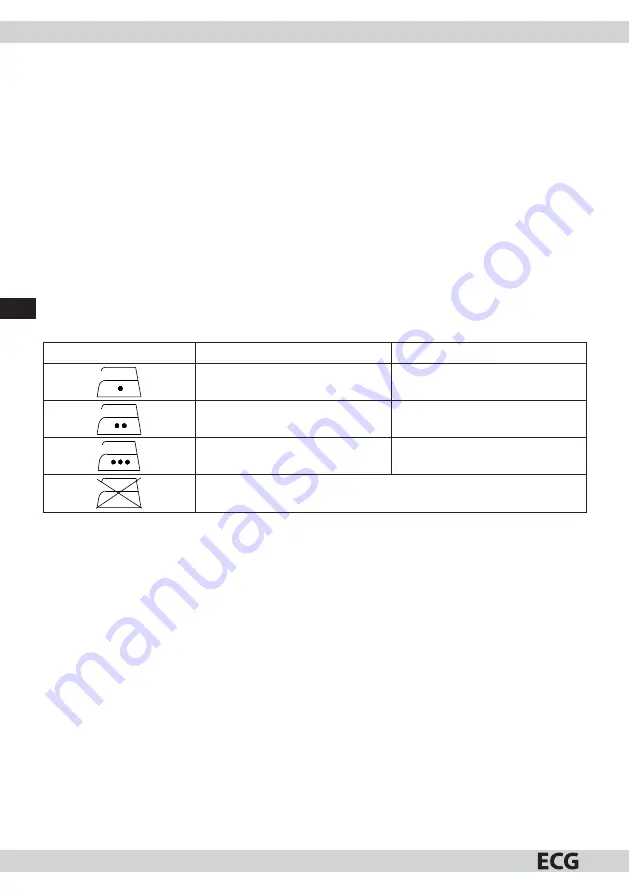
24
GB
OPERATING INSTRUCTIONS
Before putting into operation
Remove the protective foil from the soleplate fi rst! The iron must be used and stored on a stable surface.
When ironing for the fi rst time, heat the iron to the highest degree without using water. During this process,
smoke and bad smell may come from the iron, though will vanish shortly. The water reservoir can be fi lled
afterwards. After fi lling and heating the iron, leave it to produce steam for at least 1 minute while occasionally
pressing the steam button. This removes any residue from production. We recommend trying the iron on some
common fabric, e.g. a dish towel, prior to using it on your laundry for the fi rst time.
Filling the water tank
Be sure the iron is unplugged from the electrical outlet before fi lling with water!
Hold the iron in a tilted position, switch the steam control to “min” and pour water into the open fi lling hole up
to the max symbol. You can use distilled water or tap water in the iron. Do not fi ll the iron with water directly
from the tap, use the container supplied with the iron!
Temperature settings
Before ironing, sort the garments according to the international textile care and labelling codes found on tags.
If these are missing, separate the garments based on the type of fabric.
Laundry tag
Type of fabric
Temperature control
Chemical fi bres
e.g. polyester, viscose
•
low temperature
Silk, wool
••
medium temperature
Cotton, fl ax
•••
high temperature
Fabrics which can not be ironed
We recommend ironing fabrics with uncommon surfaces (e.g. fi lters, embroidery, printings etc.) at the lowest
temperature.
As far as mixes are concerned (e.g. 40% cotton, 60% synthetic material), set the temperature control according
to the fabric requiring the lower temperature.
If you are not sure of the fabric composition, determine the suitable temperature by performing a test on
the least noticeable part of clothing. Begin with the lowest temperature and slowly increase until the ideal
temperature is achieved.
Never iron spots with traces of perspiration etc.: heat from the iron fi xates fabric stains which cannot be
removed.
Removing grease stains is more eff ect using a dry iron at medium temperature: excessive heat burns the grease
and could result in the formation of yellow stains.
Iron silk, wool and synthetic fabrics inside out to prevent shiny stains from appearing.
Iron velvet fabrics in one direction (in the direction of fi bres) and do not press on the iron to prevent shiny
stains from appearing.
The more laundry put into the washing machine, the more wrinkled the laundry will be. Laundry will also
wrinkle more during high speed centrifugation.
Many fabrics are easier to iron if not completely dry. For example, silk should always be ironed moist.
Use the temperature control to set the ironing temperature according to the type of fabric. A lit indicator
signals the heat-up process of the soleplate. The indicator light going out signals the required temperature has
been reached and the ironing process can begin.
















































